Ashdod Naval Base
| Ashdod Naval Base | |
|---|---|
| | |
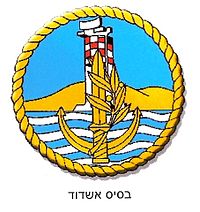 Logo of the base | |
| Type | Naval Base |
| Site information | |
| Owner | |
| Operator | |
| Garrison information | |
| Garrison | |
Ashdod Naval Base also known as Southern Arena of the Israeli Navy is a naval base located in the port city of Ashdod near the Port of Ashdod and plays an important role in the surveillance and blockade of Gaza strip as well as protecting the Port of Ashdod.
History[edit]
Establishment[edit]
The construction of the permanent camp in the south of the port began in 1965. A temporary base was established in the port within a day. Lt. Col. Yekutiel Netz was appointed as the commander of the base.[1][2]
Six Day War[edit]
Amphibious warfare ships in preparation for the landing operation at El Arish beach were stationed there. During the Six Day War and after it, ships from the 914th Torpedo Squadron were attached to floats and received fuel and supplies from the base.[1][2]
War of Attrition[edit]
During the War of Attrition, the Israeli warships engaged with an Egyptian destroyer, sinking the destroyer in about 25 minutes. This incident came to be known as Battle of Romani. The Israeli warships were directed from this base.[3]
Inauguration[edit]
The inauguration of the permanent camp of the Navy base in Ashdod was held on 12 August 1968.[4] The commander of the navy stated "the new base of the navy in Ashdod is a key to maintaining the ongoing security and sovereignty of Israel along the southern coasts from North Sinai to the entrances of Port Said".[5]
Yom Kippur War[edit]
The Battle of Baltim was fought between the Israeli Navy and the Egyptian Navy on 8–9 October 1973, during the Yom Kippur War between Baltim and Damietta. The Israeli warships that participated in the battle were stationed and co-ordinated from this base.[6]
Relocation attempts[edit]
In the early 1980s, Defense Minister Ariel Sharon wanted to bring the Navy closer to Gaza to save sailing time by moving the base to the city of Ashkelon.[7] The mayor of Ashdod, Zvi Zilkar, strongly opposed this, partly and the plan was ultimately cancelled.[7]
Aftermath of the First Intifada[edit]
After the First Intifada and the creation of a Palestinian Authority in Gaza strip, five patrols boats were organised for regular patrols which number grew to be seven patrol boats.[8]
Disengagement from Gaza[edit]
During the Israeli disengagement from Gaza, the base served as a major evacuation and transport hub for the evacuation of Israel Defense Forces (IDF) personnel from Gaza strip.[9][10]
2006 Gaza–Israel conflict[edit]
During the Operation Summer Rains on 26 June, the Israeli Navy imposed a naval closure of the Gaza Strip, to prevent the hostage Gilad Shalit being smuggled out by sea by the Palestinian militants. The navy increased patrols of naval vessels along the Gaza coastline, and prepared for an attempt to smuggle Shalit out by boat, sending instructions to captains. Palestinian fast boats were banned from operating in the area, and only small Palestinian fishing boats were allowed on the sea.[11] These patrols were organised from this base.
Blockade of the Gaza Strip[edit]
The Blockade of the Gaza Strip starting in 2007 was organised from this base.
Operation Cast Lead[edit]
During the Gaza War (2008–2009) the Israeli Navy attacked Hamas' rocket launchers and outposts, command and control centers, a Hamas patrol boat, and the office of Hamas Prime Minister Ismail Haniyeh, using the Typhoon Weapon System and surface to surface missiles.[12][13] The navy coordinated with other Israeli forces and used powerful shipboard sensors to acquire and shell targets on land.[14][15] Records of the attacks published by the navy indicate that for the first time vessels were equipped with Spike ER electro-optically guided anti-armor missiles. Videos of an attack showed precision hits from a Typhoon stabilizing gun despite a rolling sea. Versions of the Spike were also used by ground units[16] and possibly by helicopters or unmanned aerial vehicles.[17] Shayetet 13 naval commandos were also deployed to attack targets on land,[18] and reportedly attacked an Iranian ship loaded with arms for Hamas, which was docking in Sudan.[19] On 28 December, Naval vessels shelled the Port of Gaza.[20]
On 29 December, the Free Gaza Movement relief boat Dignity carrying volunteer doctors with 3.5 tons of medical supplies, human rights activists (Among them Caoimhe Butterly and former US Representative Cynthia McKinney), and a CNN reporter was involved in an altercation with Israeli patrol boats. The captain of the Free Gaza vessel said that their vessel had been rammed intentionally and that there had been no warning before it had been rammed.[21] An Israeli spokesman disputed this, and said the collision was caused by the Dignity attempting to outmaneuver the patrol boats after disobeying Israeli orders to turn back.[22]
On 4 January the Israeli Navy extended its blockade of the Gaza Strip to 20 nautical miles (37 km; 23 mi).[23]
Naval squadrons during the Operation Warm Winter were also coordinated from here.[24]
Throughout the war, the Israeli Navy employed Sa'ar 4.5-class missile boats of the flotilla in addition to Super Dvora Mk III-class patrol boats which were coordinated from this base.
May 2010 Gaza flotilla raid[edit]
On 31 May 2010, the Israeli Navy seized an aid convoy of six ships known as the "Gaza Freedom Flotilla".[25] aiming to break through the blockade, carrying humanitarian aid and construction materials. The flotilla had declined an Israeli request to change course to the Ashdod base, where the Israeli government had said it would inspect the aid and deliver (or let humanitarian organizations deliver) Israeli-approved items to Gaza.[26]

Israeli Shayetet 13 naval commandos boarded the ships from speedboats and helicopters launched from three missile ships, while the flotilla was still in international waters.[27] On the MV Mavi Marmara, the main ship of the convoy, passengers attacked and managed to capture three soldiers.[28] Israeli soldiers responded with rubber bullets and live ammunition from soldiers in helicopters and on the ship. Several of the activists were shot in the head by Israeli forces, some from behind and at close range.[29] Israel was accused of using disproportionate force. On other ships, soldiers were met with passive resistance which was easily suppressed with non-lethal techniques. Nine passengers were killed and dozens wounded. Nine soldiers were also injured, two of them seriously. All of the ships were seized and towed to Ashdod, while passengers were imprisoned in Israel and then deported to their home countries.[30][31][32][33][34][35] The MV Rachel Corrie, a seventh ship that had been delayed, set sail from Malta on the same day of the flotilla's interception. Israeli naval vessels shadowed the Rachel Corrie, and after it ignored three warnings, Israeli commandos boarded the ship from speedboats, arrested the crew, and forced it to sail to Ashdod.[36]
Freedom Flotilla II[edit]
Following the Gaza flotilla raid, a coalition of 22 non-governmental organizations (NGOs) assembled in July 2011 a flotilla of 10 vessels and 1,000 activists to breach the blockade.
The vessels docked in Greece in preparation for the journey to Gaza. However, the Greek government announced that it would not allow the vessels to leave for Gaza,[37] and the Hellenic Coast Guard stopped three vessels attempting to evade the travel ban and leave port. On 7 July, most activists left for home, leaving only a few dozen to continue the initiative.[38] On 16 July, the French yacht Dignite Al Karama was allowed to leave port after informing Greek authorities that its destination was Alexandria, Egypt. Instead, the yacht headed directly for Gaza. The Israeli Navy stopped the Dignite Al Karama about 65 kilometres (40 mi) off Gaza. After the boat was warned and refused to turn back, it was surrounded by three Israeli naval vessels and boarded by Shayetet 13 commandos, who took it over. The boat was then taken to Ashdod base.[39] Ultimately, the Freedom Flotilla sailing did not take place.
Third Gaza Flotilla[edit]
On 4 November 2011, the Israeli Navy intercepted two vessels heading towards Gaza in a private initiative to break the blockade. Shayetet 13 commandos boarded the vessels from speedboats and took them over with no resistance. The vessels were then taken to Ashdod base.[40]
Operation Iron Law[edit]
During the Victoria Affair, the ship Victoria was seized about 200 nautical miles (370 km; 230 mi) from the Israeli coast, while on its way from Turkey to El-Arish port in Egypt (other sources give the destination as Alexandria, Egypt).[41] According to the IDF, the ship picked up the cargo in the Port of Latakia in Syria and sailed to Mersin, Turkey.[42] The ship was intercepted by Israeli Navy missile ships, which radioed the captain and questioned him about his point of origin and planned destination, then informed him that his ship was suspected of carrying illegal cargo, and requested permission to board for an inspection. The captain agreed, and ordered the vessel stopped. Several minutes later, speedboats carrying commandos from Israel's elite naval unit, Shayetet 13, pulled alongside the ship. A ladder was dropped for them to climb aboard. The commandos boarded with their weapons at the ready out of concern that there could be Iranian or Hamas operatives on board. The commandos ordered the crew to assemble on the bridge, and then began inspecting the cargo.[41] The IDF said the ship's crew was unaware it was carrying concealed weapons. The ship was redirected to the Ashdod base for further inspection. After the contraband was unloaded, Israel announced it would release the Victoria and allowed it to continue its journey to the Egyptian port of Alexandria.[43]
Operation Protective Edge[edit]
During the 2014 Gaza War, Shayetet 3 off-shore fleet fired 3,494 naval shells, into the Gaza Strip[44] which was coordinated from this base.
Israel-Hamas war[edit]
During the Israel Hamas war, an estimated 35 fighters of Hamas' Nukhba unit were observed crossing into Israeli waters from the Gaza fishing zone during the Zikim attack.[45][46] Col. Eitan Paz, commander of the Ashdod naval base, having been forewarned of the invasion by Gaza Division commander Avi Rosenfeld earlier in the morning, immediately ordered the forces under his command to defend the Israeli maritime border and prevent raids on the coast.[46]
Israeli sources stated that three of the boats were destroyed by patrol boats of the Israeli Navy's 916th Patrol Squadron from Ashdod naval base before they reached the shore, and sailors of the Snapir unit, the Israeli Navy's protection and harbor security unit, subsequently moved in on Defender-class boats and killed the survivors as well as Hamas divers they discovered with gunfire and depth charges. However, the remaining boat soon made it to Zikim beach.[46][47][48]
916th Patrol Squadron[edit]
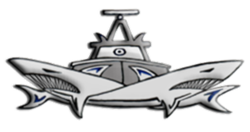
Patrol Squadron 916 is based in Ashdod base and its role is to provide mutual security - to continuously protect the country's maritime borders.The squadron operates Super Dvora Mk II-class patrol boats, Shaldag-class patrol boats and Unmanned surface vehicles.
The ships of the voyage are divided between four cruises, the Bezeq cruise, the Kasif cruise, the Trigon cruise, and the Shark cruise . Each cruise is commanded by naval officers with the rank of captain/major, a qualified vessel commander.[49]
It has a subunit called the 'Snapir unit' with the task of ensuring the security of the base.[50]
Commanders[edit]
| Ashdod base commanders | |||||
|---|---|---|---|---|---|
| name | command period | Development and special events | Photo | ||
| Yokutiel Netz | May July 1967 | Establishment | 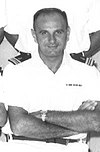
| ||
| Baruch Brushi | August 1967 – September 1969 | War of Attrition | 
| ||
| Michael Barkai | September 1969 – August 1971 | 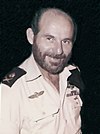
| |||
| Dov Ram | August 1971 – March 1973 | 
| |||
| Eitan Lipschitz | March 1973 – March 1974 | Yom Kippur War | 
| ||
| Joseph Elder | March 1974 – September 1976 | 
| |||
| Mousa Levy | September 1976 – December 1978 | 
| |||
| Arya Marmari | December 1978 – July 1979 | 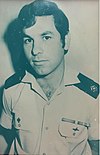
| |||
| Abraham Ashur | July 1979 – July 1982 | 
| |||
| Ami Elon | July 1982 – September 1984 | 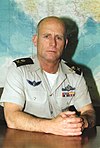
| |||
| Alex Tal | September 1984 – July 1987 | 
| |||
| Uzi Livnat | July 1987 – July 1989 | 
| |||
| Yossi Levi | July 1989 – May 1990 | 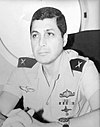
| |||
| Haim Gaesh | May 1990 - July 1992 | 
| |||
| Cypress tree | July 1992 – August 1994 | 
| |||
| Nir Maor | August 1994 – September 1996 | 
| |||
| Zev Yanovsky | September 1996 – November 1998 | 
| |||
| Slomo Frommer | November 1998 – March 2001 | 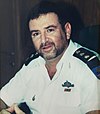
| |||
| Daniel Maoz | March 2001 – February 2003 | 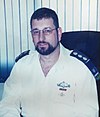
| |||
| Menachem Levi | February 2003 – September 2005 | 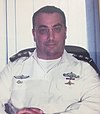
| |||
| Yoram Lex | September 2005 – August 2008 | Operation Summer Rains and Operation Warm Winter | 
| ||
| Yaron Levy | August 2008 – February 2010 | Operation Cast Lead | 
| ||
| David Sa'ar Selma | February 2010 – August 2011 | 
| |||
| Dror Friedman | August 2011 – March 2014 | 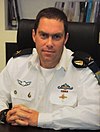
| |||
| Ido Ben-Moshe | March 2014-April 2016 | 
| |||
| Guy Goldferb | April 2016 – July 2017 | 
| |||
| Yoval Eilon | July 2017 – September 2019 | 
| |||
| Amir Gutman | September 2019 – September 2021 | 
| |||
| Eli Sohulitsky | September 2021 – August 2023 | ||||
| Eitan Paz | August 2023 – Present | ||||
References[edit]
- ^ a b Shlomo Nekedimon. A base in the presence of an enemy'.
- ^ a b Uri Porat (July 1967). A base within a day - in "Naval systems", "Navy statement on alertness and war". pp. 24–25.
- ^ "זיכרונות סא"ל משיח נסים קצין הגנ"ק של אח"י אילת מקרב רומני". moreshetyamit (in Hebrew). 25 July 2017. Retrieved 5 July 2024.
- ^ "דבר, 12 אוגוסט 1968 — חגיגות ותצוגה בפתיחת בסיס חיל־הים באשדוד [כתבה]" (in Hebrew). 12 August 1968. Retrieved 5 July 2024.
- ^ Eli Shaf (September 1968). "Naval Systems", Navy Bulletin. pp. 11–13.
- ^ Herzog and Gazit (2005), p. 312
- ^ a b Moshe Dror, Ariela Barmacher (2022). the third term, Zilkar - Ashdod Shahab , Ashdod: Avi Elad. p. 137.
- ^ Liat Lerer (2005). Summary of the Navy's activities in 2004. p. 36.
- ^ Harel, Amos (September 7, 2005). "Israel to seal Rafah crossing on Thursday as part of Gaza pullout". Haaretz. Haaretz.com. Archived from the original on July 31, 2012. Retrieved October 15, 2018.
- ^ Sara M. Roy (2016). The Gaza Strip. Institute for Palestine Studies USA, Incorporated. pp. xxiii. ISBN 978-0-88728-321-5.
- ^ Greenberg, Hanan (June 20, 1995). "Naval closure placed on Gaza". Ynetnews. Ynetnews.com. Retrieved March 1, 2012.
- ^ Dover.idf.il Archived 22 May 2009 at the Wayback Machine
- ^ Amos Harel (2008-12-29). "מבצע "עופרת יצוקה": תקיפת חיל הים ברצועת עזה: כך זה נראה" [Operation 'Cast Lead': Israeli Navy attacks on the Gaza Strip: So it seems]. Haaretz (in Hebrew). Retrieved 2010-03-24.
- ^ "> "In Gaza, Both Sides Reveal New Gear". Defense News. 5 January 2009. [dead link]
- ^ Opall-Rome, Barbara (2009-05-11). "Gaza War Is Battle Lab for Joint Combat Ops". Defense News. Retrieved 2009-08-06. [dead link]
- ^ Eshel, David (2009-05-11). "New Tactics Yield Solid Victory in Gaza". Aviation Week. Archived from the original on 14 June 2011. Retrieved 2009-07-03.
- ^ "Human Rights Watch accuses Israel over Gaza drones", Reuters, 30 June 2009
- ^ Yagna, Yanir; Ashkenazi, Eli; Pfeffer, Anshel (15 January 2009). "Hamas launches first phosphorus rocket at Negev; no injuries reported". Haaretz. Retrieved 5 May 2010.
- ^ "Report: Naval commando forces involved in Sudan strike". Ynetnews. 2009-04-08. Retrieved 2014-08-17.
- ^ "Gaza conflict: Timeline". BBC News. 2009-01-18. Retrieved 2010-06-05.
- ^ "Gaza aid boat 'rammed by Israel'". BBC News. 2008-12-30. Retrieved 2010-03-24.
- ^ "Gaza relief boat damaged in encounter with Israeli vessel". CNN. 2008-12-30. Retrieved 2010-03-24.
- ^ "Israeli ground troops enter Gaza". Al Jazeera. 2009-01-04. Retrieved 2010-03-24.
- ^ "לחימה בעזה: לפחות 60 פלסטינים נהרגו". nrg. March 1, 2008.
- ^ Black, Ian; Siddique, Haroon (31 May 2010). "Q&A: The Gaza Freedom flotilla". The Guardian. London. Archived from the original on 3 June 2010. Retrieved 2 June 2010.
- ^ Ravid, Barak; Azoulay, Yuval (27 May 2010). "Israel: Gaza aid convoy can unload cargo in Ashdod for inspection". Haaretz. Archived from the original on 16 May 2012. Retrieved 2 June 2010.
- ^ Booth, Robert (31 May 2010). "Israeli attack on Gaza flotilla sparks international outrage". The Guardian. Archived from the original on 3 June 2010. Retrieved 17 July 2012.
- ^ Reynolds, Paul (2 June 2010). "Israeli convoy raid: What went wrong?". BBC News. Archived from the original on 3 June 2010. Retrieved 2 June 2010.
The passengers... pulled out bats, clubs and slingshots with glass marbles, assaulting each soldier as he disembarked.
- ^ “Gaza Flotilla Activists Were Shot in Head at Close Range,” Guardian (4 June 2010)
- ^ Harel, Amos; Issacharoff, Avi; Pfeffer, Anshel (31 May 2010). "Israel Navy commandos: Gaza flotilla activists tried to lynch us". Haaretz.
- ^ Slackman, Michael (3 June 2010). "In Bid to Quell Anger Over Raid, Israel Frees Detainees". The New York Times. Archived from the original on 4 June 2010. Retrieved 3 June 2010.
- ^ "Turkey holds activists' funerals". Al Jazeera English. 3 June 2010. Archived from the original on 3 June 2010. Retrieved 3 June 2010.
- ^ Sanders, Edmund (1 June 2010). "Israel criticized over raid on Gaza flotilla". Los Angeles Times. Archived from the original on 31 May 2010. Retrieved 2 June 2010.
- ^ "Israel attacks Gaza aid fleet". Al-Jazeera. 31 May 2010. Archived from the original on 13 March 2011. Retrieved 2 June 2010.
- ^ "Israeli assault on Gaza-bound flotilla leaves at least 9 dead". CNN. 31 May 2010. Archived from the original on 3 June 2010. Retrieved 2 June 2010.
- ^ Gabbatt, Adam; Sherwood, Harriet; Fallon, Amy (5 June 2010). "Israeli forces board the Rachel Corrie". The Guardian. London. Archived from the original on 3 January 2017. Retrieved 14 December 2016.
- ^ "Israel's new friend: Why Greece is thwarting Gaza flotilla". The Christian Science Monitor. 2011-07-05. Archived from the original on 9 November 2011. Retrieved 2014-08-10.
- ^ Katz, Yaakov. "Flotilla to Gaza founders as Greece stays the course | JPost | Israel News". The Jerusalem Post. Archived from the original on 8 September 2011. Retrieved 2014-08-10.
- ^ "Israel deporting 15 following the Gaza flotilla raid, Israel and Egypt faced mounting international calls to ease or lift their blockade.oreigners aboard Gaza-bound boat". CNN. 20 July 2011.[dead link]
- ^ Pfeffer, Anshel (2011-11-04). "Israel Navy intercepts Gaza-bound aid vessels; no injuries reported Israel News". Haaretz. Archived from the original on 5 November 2011. Retrieved 2014-08-10.
- ^ a b Katz, Yaakov (18 March 2011). "Victoria's Secret: The inside story of an arms-laden ship". The Jerusalem Post. Retrieved 22 March 2011.
- ^ Frilling, Yonat (15 March 2011). "Israeli Navy Seizes Suspected Arms Vessel". Fox News. Archived from the original on 18 March 2011. Retrieved 22 March 2011.
- ^ Pfeffer, Anshell; Ravid, Barak (17 March 2011). "Israel to include weapons ship in UN panel on Iran arms smuggling". Haaretz. Retrieved 22 March 2011.
- ^ Humanitarian Bulletin Monthly Report, June–August 2014, Archived 21 October 2014 at the Wayback Machine OCHA 30 September 2014.
- ^ Amir Bohbot (2023-10-10). ""ב-06:30 הגיעו ארבע סירות. זה היה חלק מההונאה": תחילת הלחימה בזירה הימית". Walla! News. Retrieved 2023-12-26.
- ^ a b c Amir Bohbot (2023-11-27). "המודיעין החסר, הפשיטה על חוף זיקים והחילוץ שהתעכב: כך נכשל חיל הים ב-7 באוקטובר" (in Hebrew). Walla! News. Retrieved 2023-12-26.
- ^ Gianluca Mezzofiore; Paul P. Murphy; Allegra Goodwin (9 October 2023). "Videos show new details on how Hamas launched surprise assault on Israel". CNN. Archived from the original on 10 October 2023. Retrieved 11 October 2023.
- ^ Fabian, Emanuel (2023-10-14). "New footage shows harbor security unit foiling Hamas naval infiltration on October 7". The Times of Israel.
- ^ Annie ElRoei (October 2014). Practicing in the wet , "Bin Galim" magazine of the Navy association. pp. 60–64.
- ^ "New footage shows harbor security unit foiling Hamas naval infiltration on October 7". The Times of Israel. 14 October 2023. Archived from the original on 14 October 2023. Retrieved 20 October 2023.
Sources[edit]
- Batia Shem-El, בסיס חיל הים באשדוד, 'Between Waves' October 1975, p. 22.
- Shay Bandman, "'Time goes by fast here,'" on the control posts Erez and Tel Ridan, "Between Waves" July 1984, pp. 41–43.
- "'Ashdod 18 years'" - the story of the Ashdod base, between the waves, April 1986.
- Annie El Roei, Raviv Hadar and David Bar-בסיס לנוכח האויב - הקמת בסיס אשדוד, "Marine Systems" 86–85, July 1967, pp. 24–25.
- Uri Porat, בסיס אשדוד, 'Marine Systems' 104, July 1971, pp. 32–33.
- P. courage, על אנשים, ספינות ומלח – בסיס עין גדי, 'Marine Systems' 107–108, March 1972, p. 36.
- Orly Azoulai, חיל הים באגם המר, 'Between Waves' December 1973, p. 8.
- Orly Azoulai, על אנשים ספינות ומלח, 'Between Waves' April 1975, p. 18.
- Shlomo Man, סימן חיים בים המוות - בסיס עין גדי, 'Between Waves' March 159, 1983, p. 22.
- Shay Bandman, הזמן עובר פה מהר - יומיים בתחנות המכם הדרומיות, 'Between Waves' 162 July 1984 p. 41.
- Shlomo Man, מוסף מיוחד - ח"י לאשדוד, 'Between Waves' 167 April 1986 p. 25.
- Ruthie Rodner, נחה עליהם הרוח וגרמה להן להתקשר למצוף באשדוד, ' Galim. 170-171 June 1987, p. 23.
- Ruthie Rodner and Sigal Buchris, מ' על המים - מ' שנים לחיל הים - עצרת יום חיל הים תשמ"ח בקיסריה וגם יום החיל באשדוד, "Between Waves" 176 October 1988 pp. 1 and 4
- Sigal Buchris, ימי קרב בסיס אשדוד, 'Between Waves' 177 April 1989 p. 11.
- Sigal Buchris, בסיס אשדוד, 'Between Waves' 180 April 1990 p. 6.
- Ido Laur, הגבול הכי חם של ישראל, "Between Waves", 10, July 2006, p. 44.
- Nir Kosti, מח"ט הים מפקד בסיס אשדוד ירון בעופרת יצוקה, "Between Waves", May 2009, p. 42
- Tal Hefer and Rose Barel, חדשות חיל ים: מועדון חיילים חדש בבסיס אשדוד, Contributed by the Goldberg family of Toronto "Between Waves", December 2009, p. 12
- Raz Sharga, Ari Shabiv, Nateel Bandel and Rose Barel, "'Quiet takeover of the "provocation flotilla" and also "'Trends of dealing with maritime terrorism' and also "'Talking about the flotilla'", "Bin Galim", October 2010, pp. 36, 37 and 40
- Dario Nitzan יחידת הברטרמים באשדוד ובים המלח July 15, 2015 at the website of the Maritime Heritage Conservancy
- Annie Elroy, מבצע צוק איתן: עזה באחריותנו 24/7, וגם העיניים היפות של הגזרה, "Between Waves", October 2014, p. 33
- Dawn as a window, בסיס חיל הים אירח תלמידי ישיבות ההסדר Article in Ashdodent December 27, 2016

